ASL: "meet"
The sign "MEET" (as in "two people meet) uses "index finger" handshapes.
The two hands
"meet" in the middle. (Make sure to scroll down and check out the
variations on this sign.)
MEET:
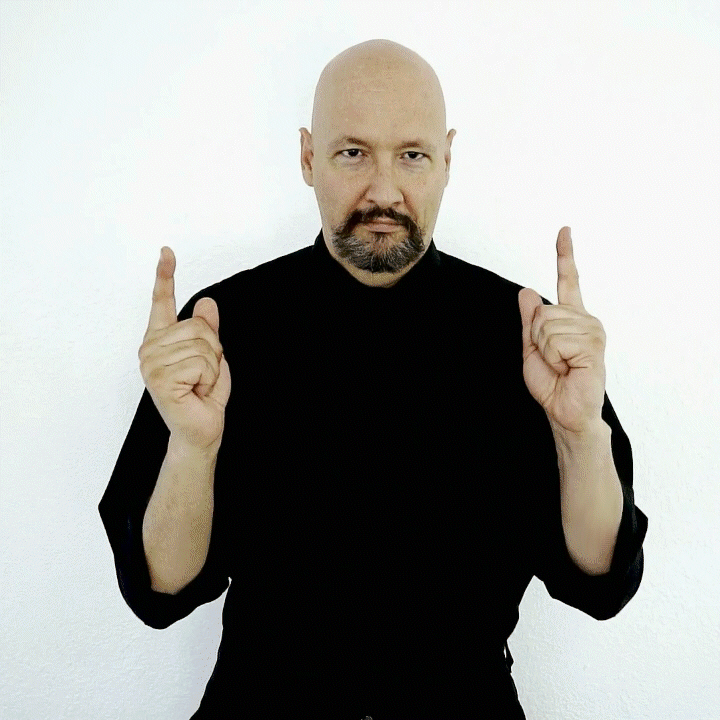
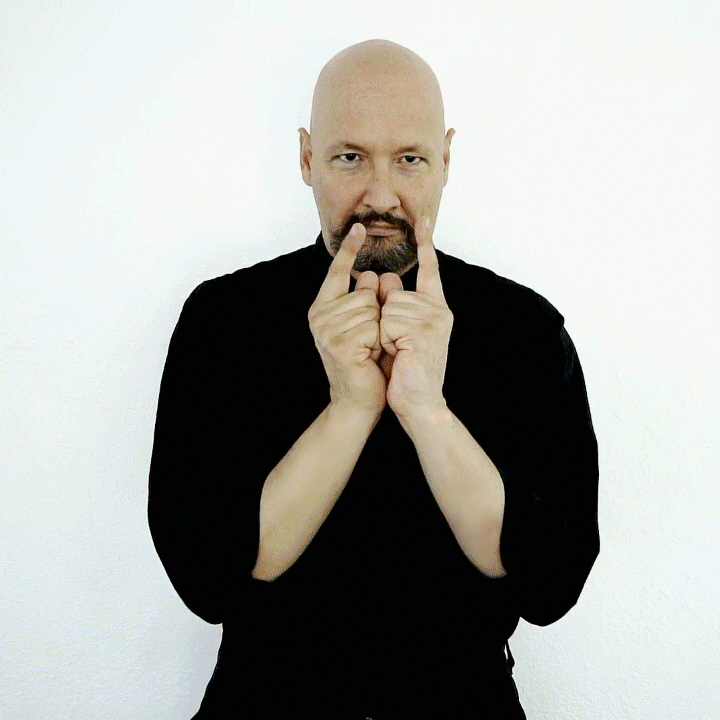
Animated gif of MEET:
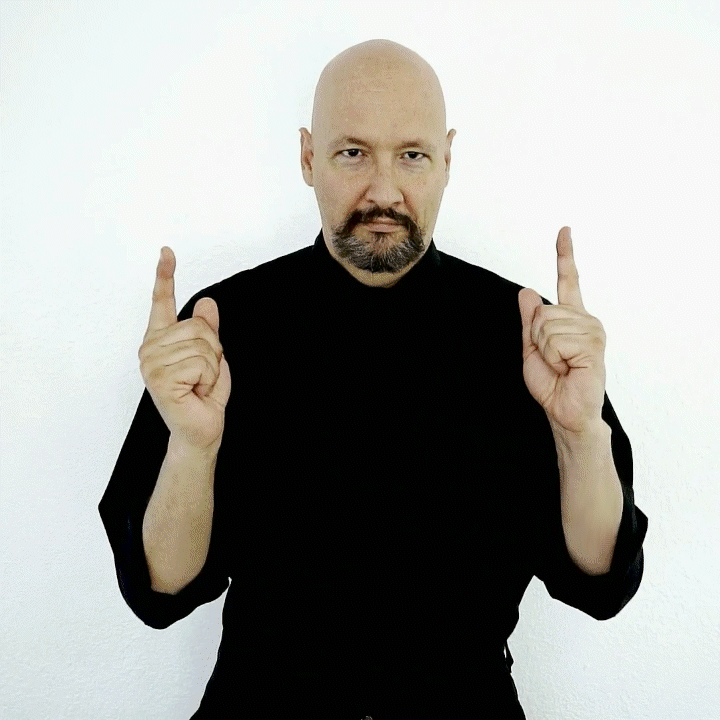
The sign "MEET" can incorporate the
subject (me) and object (you) of the sentence without needing to add the
sign ME nor the sign YOU.
The sign "me-MEET-you" or "I meet you" uses the
movement direction of the dominant hand to establish who is meeting whom.
Notice how the dominant hand (the right hand for right handed people) moves
from me toward you. The non-dominant hand (the left hand for right
handed people) is held away from the body. The
right hand "meets" the left hand. (It is the opposite for left
handed people.) You don't need to add the signs "I" or
"YOU." This one sign includes that information already.
me-MEET-you:
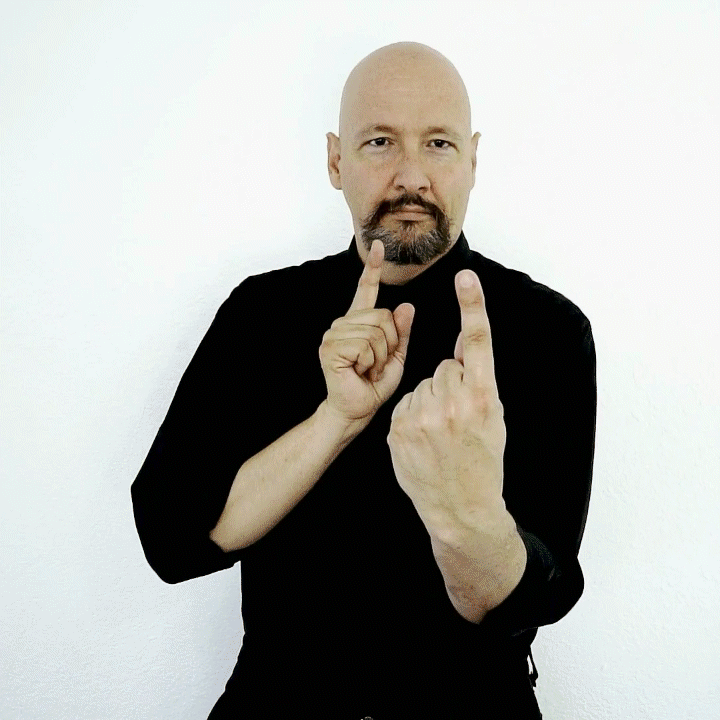
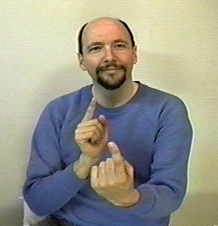

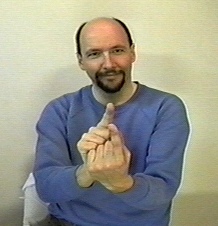
(Yes, I used to have some hair up top.
Let's not make an issue of it.)
Note: The tips of the index fingers do not touch
during the sign for meet.
That would be awkward since it would indicate two people meeting and
pressing their faces together.
Fun perhaps, but still...awkward. So don't do
it if you ever want to be invited anywhere in polite society.
Let me show
you another version where it is more clear that the fingertips don't
touch:
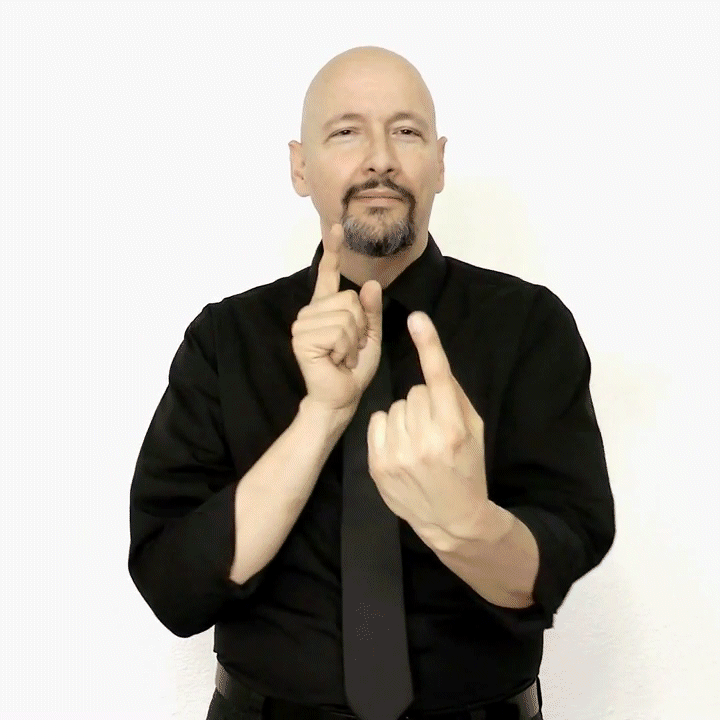
On the other hand (heh) if you move the non-dominant hand toward you it
changes the meaning to:
you-MEET-me (you came up to me / you approached me).
you-MEET-me:
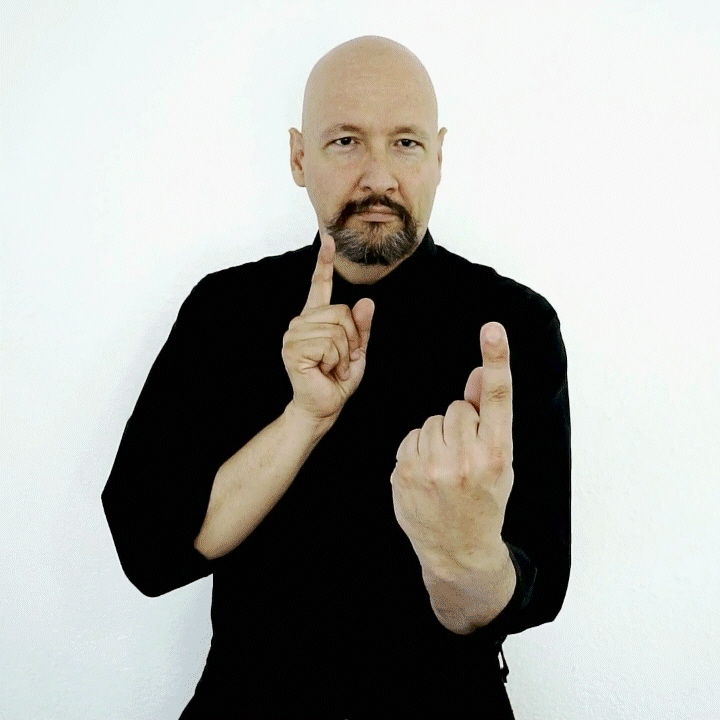
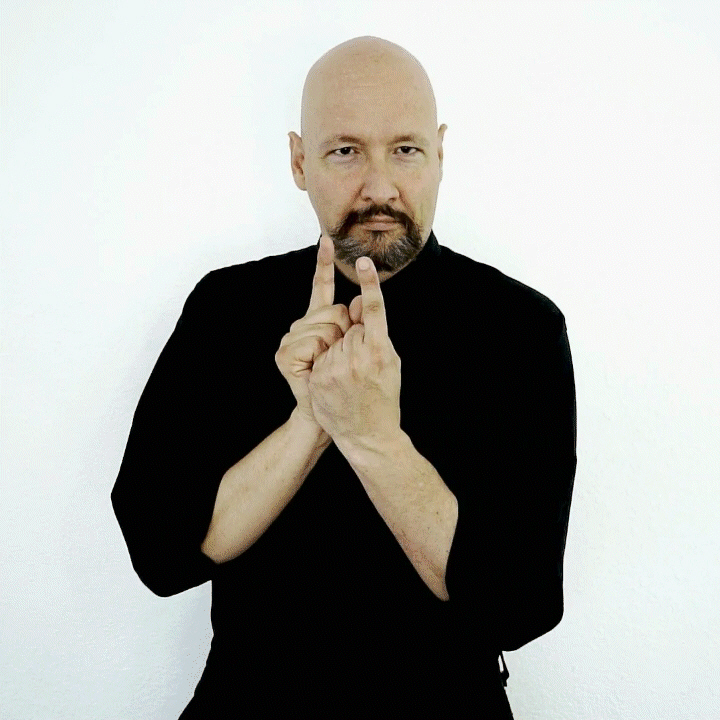
Animated gif of you-MEET-me:
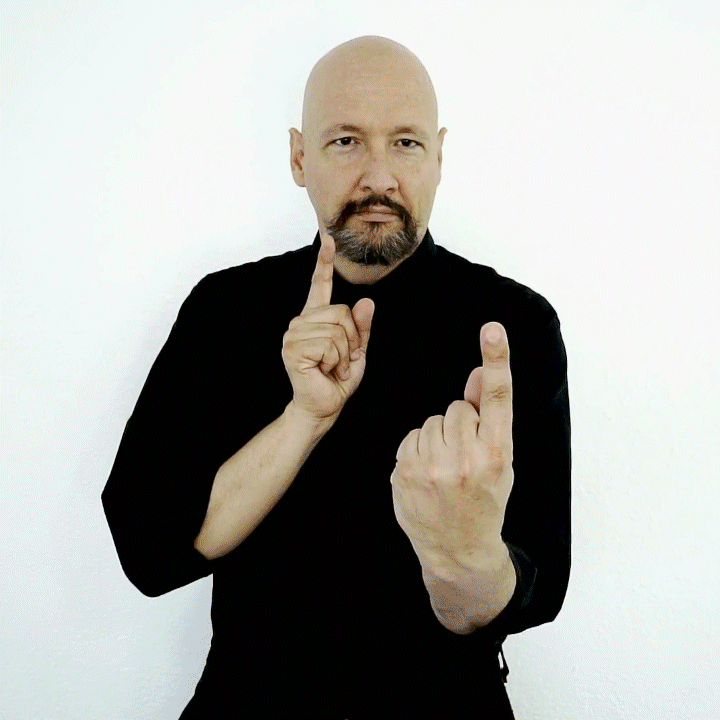
The sign MEET is "directional." You can modify the direction in
which you do the sign to indicate who is meeting whom.
For example you can hold the non-dominant hand a bit off to the side and
move the dominant hand toward it to mean "meet that person."
MEET him / her / that person:
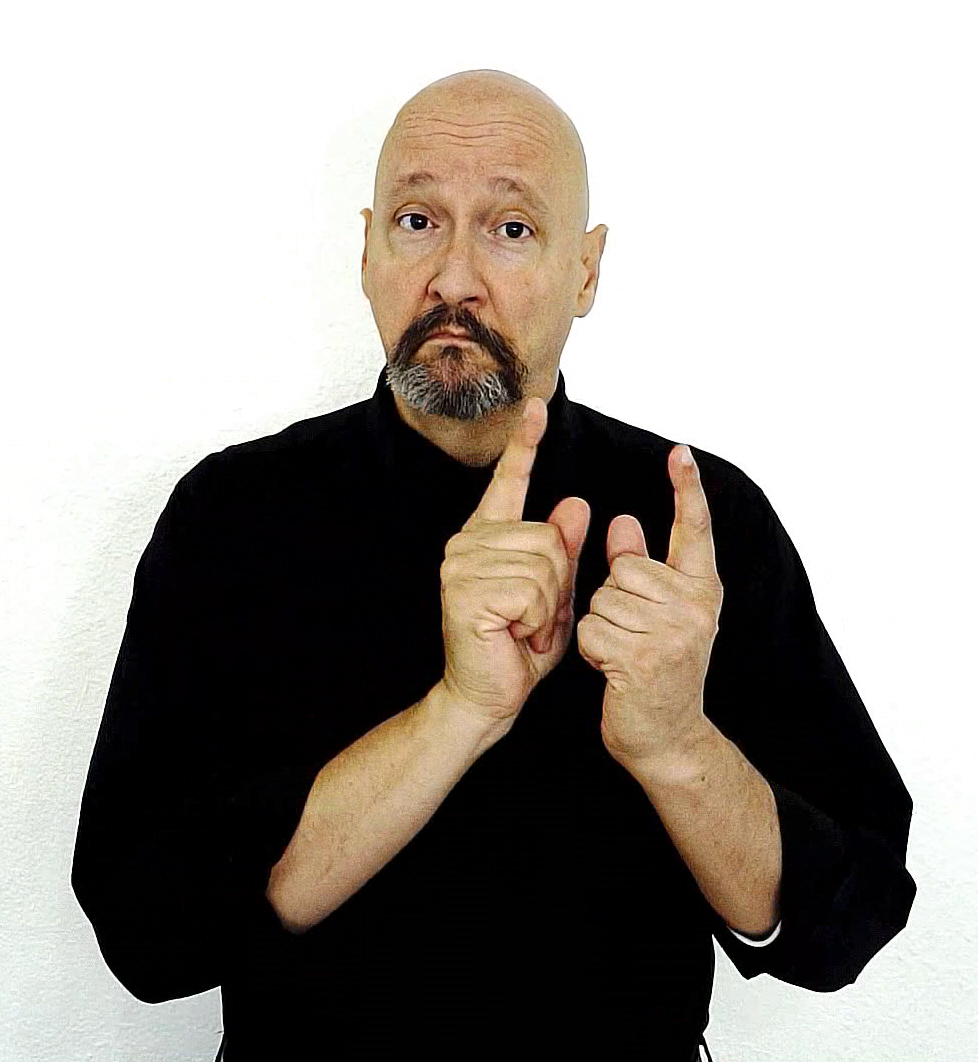
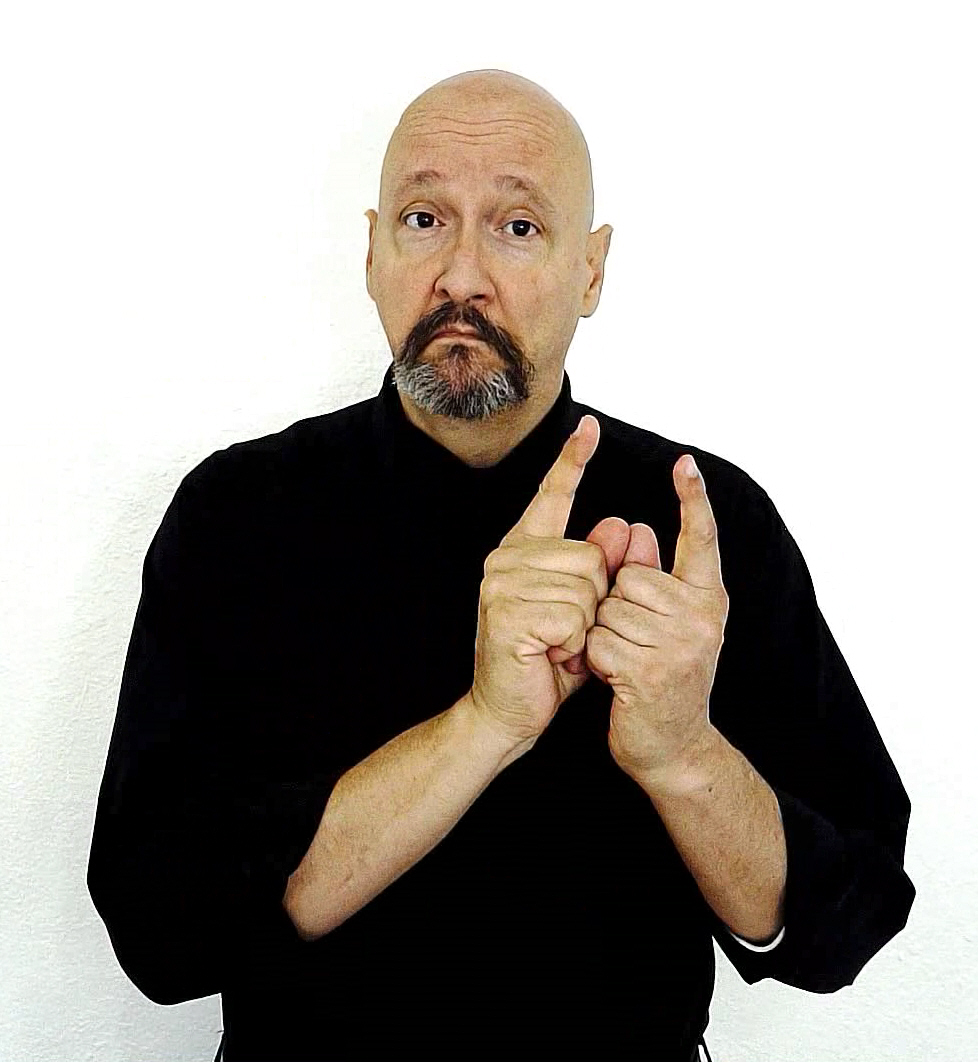
If you mean "meet" as in "a meeting" and/or a group of people
meeting, see:
MEETING
Notes:
The sign MEET can "level up."
By that I mean that the sign MEET can be used in increasingly powerful ways at differing levels of complexity:
Level 1: MEET: Plain verb version -- not inflected
Level 2: me-MEET-you: Indicating verb version
Level 3: me-MEET-you-[there]: indicating + locative verb version
Level 4: me-MEET-you-[there]-[speedily] indicating + locative + depictive verb version (in other words the "classifier" version of "MEET."
Once you reach Level 4 you can have arrived at the stage where you indicate "how."
Level 1 = what? -- a meeting of two people
Level 2 adds "who" = me and you (etc.)
Level 3 adds "where" = you and me meet there
Level 4 adds "how" = manner or affect (emotion) and can include a wide variety of inflections: reluctantly, excitedly, quickly, after summoning willpower, etc. For example, a person could roll-their eyes while signing MEET to indicate that the person
doesn't think the meeting is of value or is a waste of time.
It's sort of funny how often students mess up and sign "Nice to date
you" instead of "Nice to meet you."
There is a difference between a "D" handshape and a "1" (also called an "index-finger") handshape.
You should do signs like
"MEET" and "WHERE" using the
"1" (or "index-finger) handshape not a "D" handshape.
Compare MEET vs
DATE (as in
"romantic dating").
The sign MEET can "level up."
By that I mean that the sign MEET can be used in increasingly powerful ways at
differing levels of complexity:
Level 1: MEET: Plain verb version -- not inflected
Level 2: me-MEET-you: Indicating verb version
Level 3: me-MEET-you-[there]: indicating + locative verb version
Level 4: me-MEET-you-[there]-[speedily] indicating + locative + depictive verb
version (in other words the "classifier" version of "MEET."
Once you reach Level 4 you can have arrived at the stage where you indicate
"how."
Level 1 = what? -- a meeting of two people
Level 2 adds "who" = me and you (etc.)
Level 3 adds "where" = you and me meet there
Level 4 adds "how" = manner or affect (emotion) and can include a wide variety
of inflections: reluctantly, excitedly, quickly, after summoning willpower, etc.
For example, a person could roll-their eyes while signing MEET to indicate that
the person doesn't think the meeting is of value or is a waste of time.
*
Want to help support ASL University? It's easy:
DONATE (Thanks!)
* Another way to help is to buy something from Dr. Bill's "Bookstore."
* Want even more ASL resources? Visit the "ASL Training Center!" (Subscription
Extension of ASLU)
* Also check out Dr. Bill's channel:
www.youtube.com/billvicars
You can learn American Sign Language (ASL) online at American Sign Language University ™
ASL resources by Lifeprint.com © Dr. William Vicars